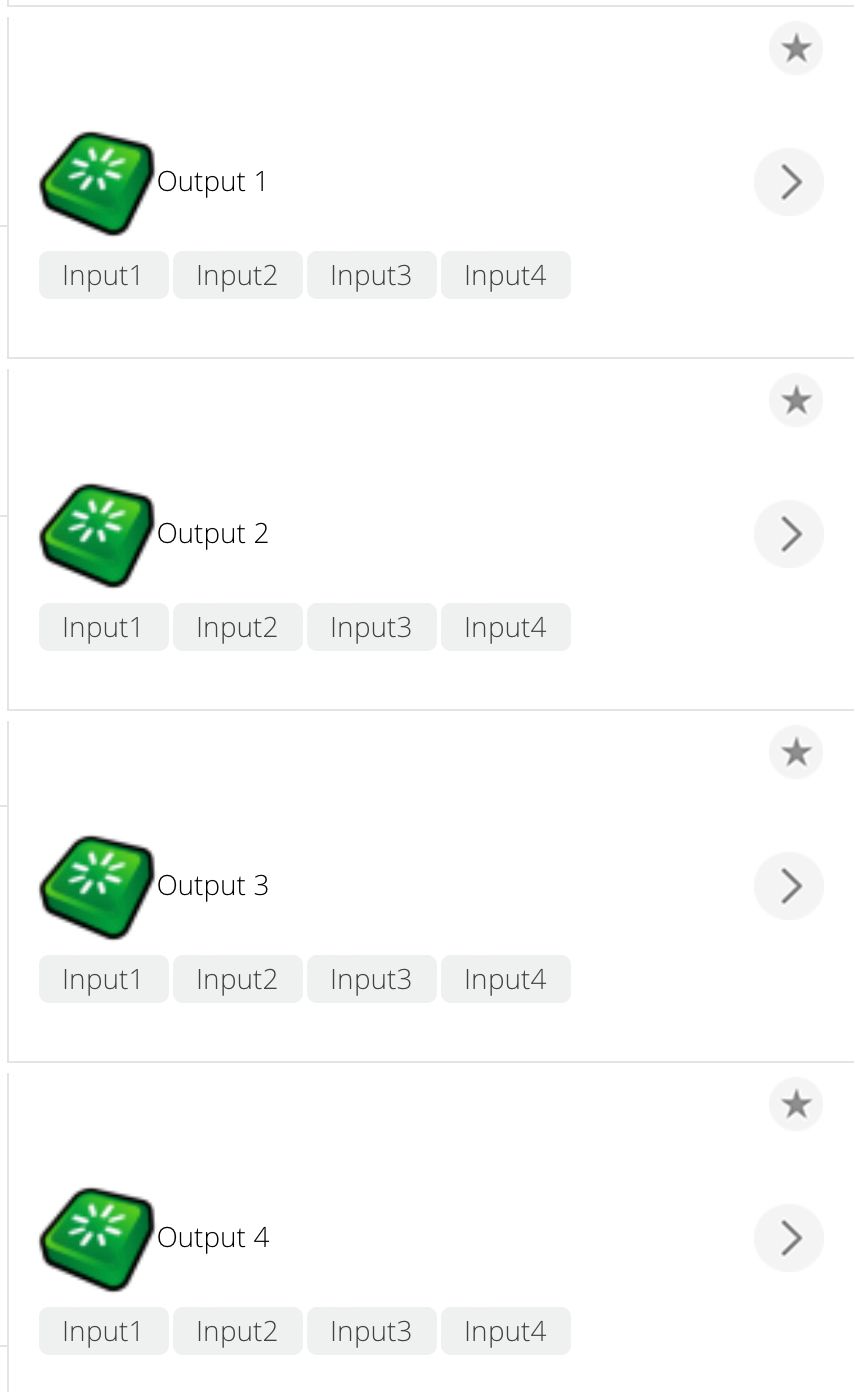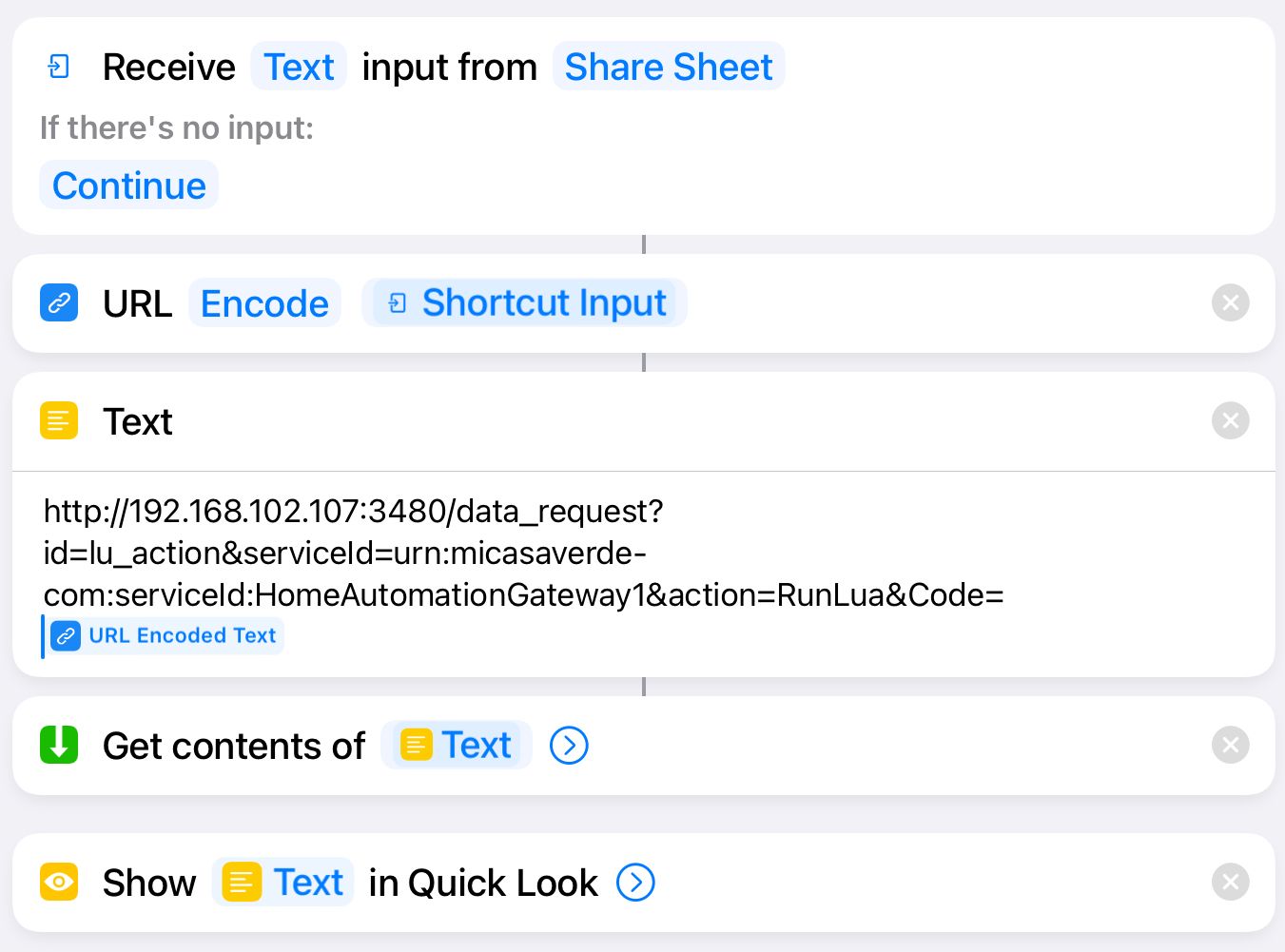Help with luup.chdev.sync
-
I'm struggling to fix the code attached here
https://github.com/dbochicchio/vera/blob/master/OpenSprinkler/L_VeraOpenSprinkler1.lua#L270,L429Under certain circumstances (thanks @DesT!) I see that it's causing a luup reload infinite cycle, because child devices are being created, then deleted. Specifically, I see this in the logs:
2020-06-01 19:35:30.482 luup.chdev.sync:: [102] Open Sprinkler Test, syncing children 2020-06-01 19:35:30.482 openLuup.chdev:: deleting [413] Daily Garden 2020-06-01 19:35:30.482 openLuup.chdev:: deleting [414] Water Level 2020-06-01 19:35:30.482 openLuup.chdev:: deleting [411] Daily Cedars 2020-06-01 19:35:30.482 openLuup.chdev:: deleting [412] St-Eustache Rules AM 2020-06-01 19:35:30.482 openLuup.luup:: device 102 'Open Sprinkler Test' requesting reloadThe devices are created (look at line 357/410), but when I call luup.chdev.sync, they got deleted. Any hints? Thanks
-
Yes, indeed. It's a curious construct, but we have learned to live with it.
My particular frustration is that some of the other parameters, which are standard in the call to create new devices, are not available here. I think that the whole chdev module is only there to avoid Vera's standard reload for every new device created.
-
Hi,
I have a similar luup.chdev.sync issue, where the sync removes the previously created child, when it should be creating a new child device..
Example in the logs.
09 12/23/21 22:26:45.239 Child_Devices::ProcessChildDevice created device 1159 id JohnDevice under 1152 topmost parent 1152 <0x71eb6520> 09 12/23/21 22:26:45.240 Child_Devices::Synchronize removing 1158 from parent 1152 <0x71eb6520>My code has a handler that receives a json file, which it processes, and if it doesn’t find an existing entry to update, it will call this code to create a child device ..
local childDeviceIndex = {} child_devices = luup.chdev.start(ParentDevice) -- Tells Luup to start enumerating children for this device based on it's dev_id debug("RoomMe parent lul_device = " ..ParentDevice) luup.chdev.append(ParentDevice,child_devices, j.id, j.userName.."'s Device", "urn:schemas-nodecentral-net:device:RoomMe:1", "D_RoomMeDevice1.xml", "", "urn:nodecentral-net:serviceId:RoomMeDevice1,Icon=".. iconCalc .."\nurn:nodecentral-net:serviceId:RoomMeDevice1,uiLabel=TBC\nurn:nodecentral-net:serviceId:RoomMeDevice1,userId=".. j.userId .."\nurn:nodecentral-net:serviceId:RoomMeDevice1,id=".. j.id .."\nurn:nodecentral-net:serviceId:RoomMeDevice1,userName="..j.userName.."\nurn:nodecentral-net:serviceId:RoomMeDevice1,roomName="..j.roomName.."\nurn:nodecentral-net:serviceId:RoomMeDevice1,eventType="..j.type.."\nurn:nodecentral-net:serviceId:RoomMeDevice1,eventTime="..j.eventTime.."\nurn:nodecentral-net:serviceId:RoomMeDevice1,sensorId="..j.sensorId.."\nurn:nodecentral-net:serviceId:RoomMeDevice1,eventName="..j.event.name.."", false) debug("New RoomMe device created id = " .. j.id .. " for ".. j.userName) luup.chdev.sync(ParentDevice, child_devices) for k, v in pairs(luup.devices) do if (v.device_num_parent == ParentDevice) then -- populate child device table childDeviceIndex[v.id]=k endWhat am I missing in the above that causes it to not append, but replace ?
-
@parkerc …
@therealdb said in Help with luup.chdev.sync:
I was calling append only on new devices, instead of every device! If omitted, the existing devices are removed!
…does this not describe your situation?
-
@parkerc …
@therealdb said in Help with luup.chdev.sync:
I was calling append only on new devices, instead of every device! If omitted, the existing devices are removed!
…does this not describe your situation?
@akbooer said in Help with luup.chdev.sync:
@parkerc …
@therealdb said in Help with luup.chdev.sync:
I was calling append only on new devices, instead of every device! If omitted, the existing devices are removed!
…does this not describe your situation?
Hi, I did read that, but i wasn’t sure if it was related or not, as I didn’t quite understand it..
All my previous use of creating child devices, was done during the initial set up, as i had everything discovered/defined upfront.
This time around it’s different, as devices need to be created on the fly, whenever something calls the handler..
Re-reading the thread again..
Do I have to retrieve all the attributes/variable of any pre-existing child device that’s associated with that same parent, and recreate them too as part of the ‘append’ process for a new child device that needs to be added?
-
@akbooer said in Help with luup.chdev.sync:
@parkerc …
@therealdb said in Help with luup.chdev.sync:
I was calling append only on new devices, instead of every device! If omitted, the existing devices are removed!
…does this not describe your situation?
Hi, I did read that, but i wasn’t sure if it was related or not, as I didn’t quite understand it..
All my previous use of creating child devices, was done during the initial set up, as i had everything discovered/defined upfront.
This time around it’s different, as devices need to be created on the fly, whenever something calls the handler..
Re-reading the thread again..
Do I have to retrieve all the attributes/variable of any pre-existing child device that’s associated with that same parent, and recreate them too as part of the ‘append’ process for a new child device that needs to be added?
@parkerc said in Help with luup.chdev.sync:
Do I have to retrieve all the attributes/variable of any pre-existing child device that’s associated with that same parent, and recreate them too as part of the ‘append’ process for a new child device that needs to be added?
Yes, you’ll need to append every child decide that must be present. So, both existing and new ones.
-
Thanks @therealdb
That was what I was afraid of

What is the best way to do that?
How are you retrieving all the variables of any pre-existing child devices and then recreating them ?
Do I just loop through everything that has the parent device ID associated and recreate ?
-- Create new one first then through existing ? for k, v in pairs(luup.devices) do if (v.device_num_parent == ParentDevice) then << luup.chdev_append - CODE HERE >> endIf I append all existing ones first, before creating the new one, I assume that will duplicate them and increment the device numbers before registering the new one?
If so, that suggests, I need to append the new one first, and then append the existing ones ? But again won’t that increment the device numbers

There must be an order to which you do this?
-
OK, looking at how others have done it, I can see the following in @toggledbits Switchboard plugin, so this gives me something to work with….
--[[ Prep for adding new children via the luup.chdev mechanism. The existingChildren table (array) should contain device IDs of existing children that will be preserved. Any existing child not listed will be dropped. If the table is nil, all existing children in luup.devices will be preserved. --]] local function prepForNewChildren( ) D("prepForNewChildren()") local existingChildren = {} for k,v in pairs( luup.devices ) do if v.device_num_parent == pluginDevice then local d = {} d.devnum = k d.device = v d.device_file = luup.attr_get( "device_file", k ) or "" d.device_json = luup.attr_get( "device_json", k ) or "D_BinarySwitch1.json" d.behavior = getVar( "Behavior", "Binary", k, MYSID ) if d.device_file ~= "" then table.insert( existingChildren, d ) end end end local ptr = luup.chdev.start( pluginDevice ) for _,d in ipairs( existingChildren ) do local v = d.device D("prepForNewChildren() appending existing child %1 (%2/%3)", v.description, d.devnum, v.id) luup.chdev.append( pluginDevice, ptr, v.id, v.description, "", d.device_file, "", "", false ) end return ptr, existingChildren endAnd then the add child code is here..
function jobAddChild( ctype, cname, count, pdev ) assert(luup.devices[pdev].device_type == MYTYPE) assert(dfMap[ctype]) local df = dfMap[ctype] count = math.min( 16, math.max( 1, tonumber(count) or 1 ) ) L("Adding %1 children %2 (type %2)", count, df.name, ctype) gatewayStatus( "Creating child. Please hard-refresh your browser!" ) local ptr,children = prepForNewChildren() local id = 0 for _,d in ipairs( children ) do local did = tonumber(d.device.id) or 0 if did > id then id = did end end for _=1,count do id = id + 1 local vv = { MYSID .. ",Behavior=" .. ctype } table.insert( vv, ",device_json=" .. df.device_json ) table.insert( vv, ",category_num=" .. df.category or 3 ) table.insert( vv, ",manufacturer=" .. DEV_MFG ) table.insert( vv, ",model=Switchboard Virtual " .. df.name ) if df.subcategory then table.insert( vv, ",subcategory_num=" .. df.subcategory ) end local nn = cname == nil and ( "Virtual " .. df.name .. " " .. id ) or ( tostring(cname) .. ( count > 1 and tostring(id) or "" ) ) luup.chdev.append( pdev, ptr, id, nn, "", df.device_file, "", table.concat( vv, "\n" ), false ) end luup.chdev.sync( pdev, ptr ) return 4,0 end -
Ok, think I’ve got it working now.. FYI for anyone who comes across this.. (thanks to @toggledbits code as the guide.)
First off , seems obvious, but prepare for any new devices, but creating a table of what’s there already..
local function prepForNewChildren(ParentDevice) -- Create table of existing child devices associated with the parent device local existingChildren = {} for k,v in pairs( luup.devices ) do if v.device_num_parent == ParentDevice then local d = {} d.devnum = k d.device = v d.device_file = luup.attr_get( "device_file", k ) or "" d.device_json = luup.attr_get( "device_json", k ) or "" if d.device_file ~= "" then table.insert( existingChildren, d ) end end end -- Start enumerating children based on the parent's device_id local ptr = luup.chdev.start( ParentDevice ) for _,d in ipairs( existingChildren ) do local v = d.device luup.chdev.append( pluginDevice, ptr, v.id, v.description, "", d.device_file, "", "", false ) end return ptr, existingChildren endThen utilise your create child code/function, that calls the what children are already there function first

local function createNewRoomMeChildDevice(j, ParentDevice) -- j is the decoded json provided by the handlers which has the new child device info debug("Creating child device for lul_device = " ..ParentDevice) -- prepare for the addition of new child devices local ptr,children = prepForNewChildren(ParentDevice) -- Create and append new child device to the existing parent device luup.chdev.append(ParentDevice,ptr, j.id, j.userName.."'s Device", "urn:schemas-nodecentral-net:device:RoomMe:1", "D_RoomMeDevice1.xml", "", "urn:nodecentral-net:serviceId:RoomMeDevice1,Icon=".. iconCalc .."\nurn:nodecentral-net:serviceId:RoomMeDevice1,uiLabel=TBC\nurn:nodecentral-net:serviceId:RoomMeDevice1,userId=".. j.userId .."\nurn:nodecentral-net:serviceId:RoomMeDevice1,id=".. j.id .."\nurn:nodecentral-net:serviceId:RoomMeDevice1,userName="..j.userName.."\nurn:nodecentral-net:serviceId:RoomMeDevice1,roomName="..j.roomName.."\nurn:nodecentral-net:serviceId:RoomMeDevice1,eventType="..j.type.."\nurn:nodecentral-net:serviceId:RoomMeDevice1,eventTime="..j.eventTime.."\nurn:nodecentral-net:serviceId:RoomMeDevice1,sensorId="..j.sensorId.."\nurn:nodecentral-net:serviceId:RoomMeDevice1,eventName="..j.event.name.."", false) debug("New RoomMe device created id = " .. j.id .. " for ".. j.userName) -- Sync all child devices luup.chdev.sync(ParentDevice, ptr) end -
In your case, you likely have no need of a separate object to hold the child data in the pre-scan, you can just use
existingChildrenas an array of device numbers (fromkin the first/pre-scan loop) and then use it to index intoluup.devicesin the chdev.appends later.You probably don't even need the pre-scan at all in most cases, you can just iterate over
luup.devicesinside the open chdev and add the existing devices directly, without creatingexistingChildrenand a second loop. -
Hi @toggledbits
Do you mean something like this..
local function createChildDevices(ParentDevice, decodedJSON) -- build table of any existing child devices local existingChildren = {} for k,v in pairs( luup.devices ) do if v.device_num_parent == ParentDevice then local d = {} d.devnum = k d.device = v d.device_file = luup.attr_get( "device_file", k ) or "" d.device_json = luup.attr_get( "device_json", k ) or "" if d.device_file ~= "" then table.insert( existingChildren, d ) end end end -- Start enumerating children based on the parent device_id local ptr = luup.chdev.start( ParentDevice ) for _,d in ipairs( existingChildren ) do local v = d.device luup.chdev.append( pluginDevice, ptr, v.id, v.description, "", d.device_file, "", "", false ) end -- Create and append new child device to the existing parent device luup.chdev.append(ParentDevice,ptr, decodedJSON.id, decodedJSON.userName.."’s Device", "urn:schemas-nodecentral-net:device:RoomMe:1", "D_RoomMeDevice1.xml", "", "urn:nodecentral-net:serviceId:RoomMeDevice1,Icon=".. iconCalc .."\nurn:nodecentral-net:serviceId:RoomMeDevice1,uiLabel=TBC\nurn:nodecentral-net:serviceId:RoomMeDevice1,DeviceName="..decodedJSON.device.name.."", false) -- Sync all child devices luup.chdev.sync(ParentDevice, ptr) end -
That's what I mean you don't need to do... is that what you meant?


